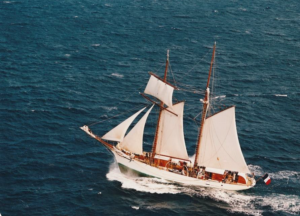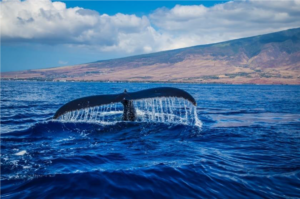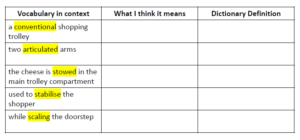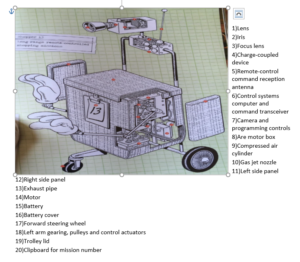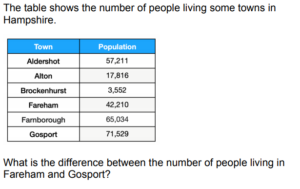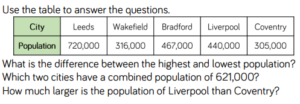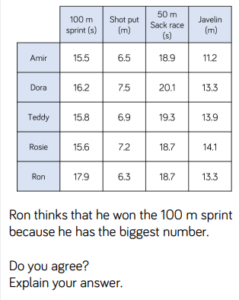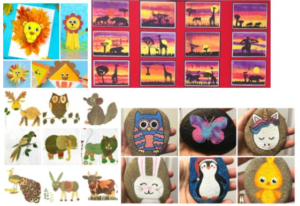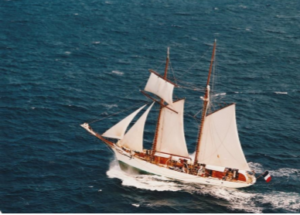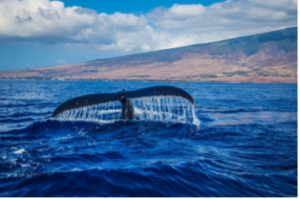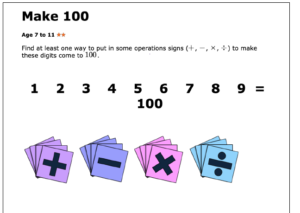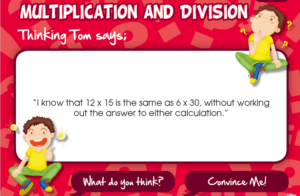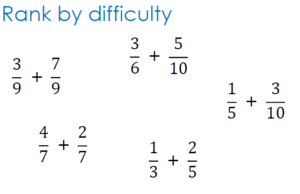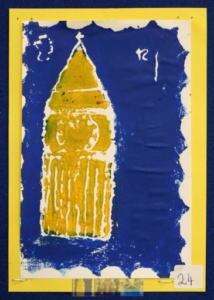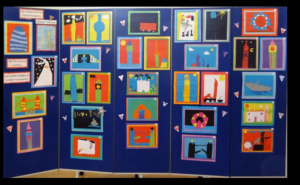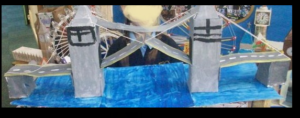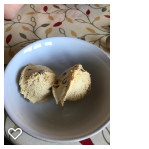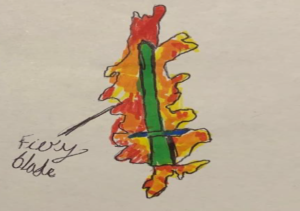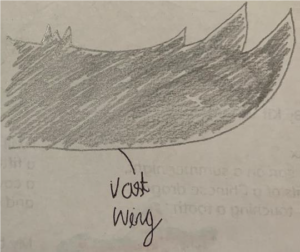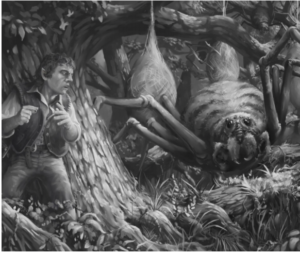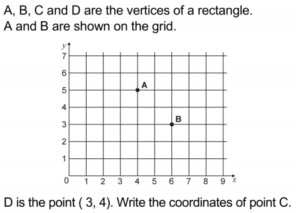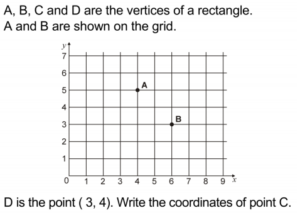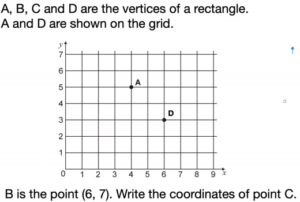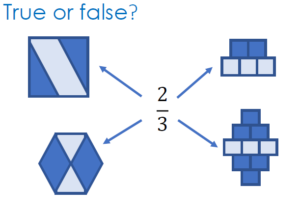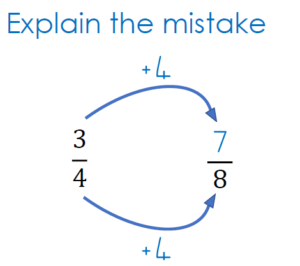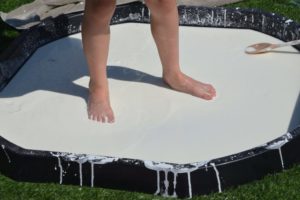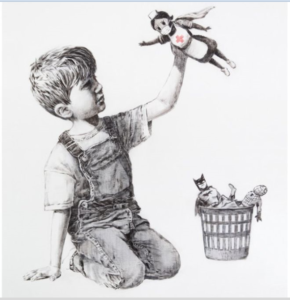Home learning activities week beginning June 1st
Hello Year 5
We hope you have all had a fantastic half term break and that you have been enjoying the amazing weather we have had! Below you will find all of your home learning activities for this week – we hope you enjoy completing them. Don’t forget to email through your favourite piece of work so that we can see all of the great learning you have done.
Year 5 home learning activities for week beginning Monday 1st June
Reading
Reading Comprehension
Sea Fever, by John Masefield
Sea Fever
I must go down to the seas again, to the lonely sea and the sky,
And all I ask is a tall ship and a star to steer her by;
And the wheel’s kick and the wind’s song and the white sail’s shaking,
And a grey mist on the sea’s face, and a grey dawn breaking.
I must go down to the seas again, for the call of the running tide
Is a wild call and a clear call that may not be denied;
And all I ask is a windy day with the white clouds flying,
And the flung spray and the blown spume, and the sea-gulls crying.
I must go down to the seas again, to the vagrant gypsy life,
To the gull’s way and the whale’s way where the wind’s like a whetted knife;
And all I ask is a merry yarn from a laughing fellow-rover,
And quiet sleep and a sweet dream when the long trick’s over.
Lesson 1: Read aloud and enjoy together
This is probably John Masefield’s most famous poem. It was written at the start of the twentieth century.
Enjoy reading the poem aloud, paying attention to its rhythm and rhyme. Read it several times to get the feel of the poem.
If you can, try alternating reading aloud with another person. You could perhaps read a line or a verse in turn.
Discuss any tricky vocabulary in the poem.
Lesson 2: Respond to poetry
Task 1: Read the poem again and discuss the following questions to help you respond to it:
Q1: Do you like the poem? Why?
Q2: How does the poem make you feel? Why?
Q3: Does the poem make sense to you?
Q4: Does the poem have a story or a message? What is it?
Q5: Have you read a poem like this before? How are they similar and different?
Q6: Can you think of another title for the poem?
Task 2: Clarify vocabulary
Think about the vocabulary that could be tricky in the poem. You may already have discussed some of these words, but it is useful to carry out exercises like the example below to help fix the words in your memory.
| Word | Definition |
| Use In a sentence | |
Example:
| Rover | A person who spends their time wandering |
| The rover strolled through the town without a care in the world | |
Lesson 3: Language for effect
John Masefield makes effective use of figurative language in the poem. He uses personification when referring to nature: “the sea’s face” and “the wind’s song”, for example.
Q1: What is the effect of this personification? What does it tells us about how the narrator views the sea and the natural world around it?
Q2: Can you find an example of alliteration? (Alliteration is the repetition of consonant sounds in quick succession.)
Q3: Can you find an example of repetition in the poem? What effect does this have on the reader?
Q4: Are there any other examples of figurative language? Annotate your copy of the poem to show where figurative language has been used.
Lesson 4: Get creative!
Task: Create a poetry mood board for Sea Fever, using images from the Internet or your own drawings. For each image, annotate the section of the poem that it relates to.
Lesson 5: Quick quiz
Using the poem, explore these questions and answer them using evidence from the text to back up your answers.
Q1: What is the narrator’s opinion of the sea?
Q2: John Masefield appeals to the reader’s senses in Sea Fever. Use quotes from the poem and link them to the senses.
Q3: Who do you think the narrator of the poem is and what might he have done in his life? What age do you think he is and why?
Q4: If you were to write a poem about the natural world, which place would you choose and why?
Writing:
Wallace and Gromit Shopper 13
5 day writing sequence
This sequence is developed around an episode of Wallace and Gromit Cracking Contraptions. The episode can be found on YouTube using the following link:
https://www.youtube.com/watch?v=kB1dXzHcuQg
Lesson 1 –Response to Reading
Task 1: Watch the Cracking Contraptions episode –Shopper 13
https://www.youtube.com/watch?v=kB1dXzHcuQg
Task 2: Read part 1 of the ‘General Description’ of Shopper 13 (below)
As you read make notes:
–How is the text different to a story?
–Is there any vocabulary you don’t understand and need to look up?
–Is the voice formal or informal? How do you know?
–Do you have any questions?
General Description (part 1)
Wallace’s ‘Shopper’ is a remote-controlled, automated shopping device comprising a conventional shopping trolley to which has been added a motor driving the two rear wheels, a front wheel for steering, a video camera, two articulated arms and associated control components and wiring. The model shown here is ‘Shopper 13’, this being the device’s 13th trip to the shops.
Shortly after the Shopper sets out on a trip (or ‘mission’), compressed air expressed through nozzles is used to jettison a panel on either side of the main compartment. This allows for the deployment of two fully articulated arms and hands, which are controlled through a set of gears, pulleys and actuators on either side. Overall navigation and command is performed by remote from ‘mission control’ (the cellar of 62 West Wallaby Street).
Task 3: Answer the following questions:
Q1: What has been added to the shopping trolley? (list 5 things)
Q2: How are the panels removed on either side?
Q3: Where is mission control?
Lesson 2: Vocabulary
This information text uses lots of precise, technical language as it is an explanation.
It is important to check we understand the vocabulary being used. Look at each of the highlighted words and think carefully about what the writer is trying to explain.
Write what you think it means before checking in a dictionary / online dictionary.
Lesson 3: Exploring the Writing
Read the complete ‘General Description’
General Description (part 1)
Wallace’s ‘Shopper’ is a remote-controlled, automated shopping device comprising a conventional shopping trolley to which has been added a motor driving the two rear wheels, a front wheel for steering, a video camera, two articulated arms and associated control components and wiring. The model shown here is ‘Shopper 13’, this being the device’s 13th trip to the shops.
Shortly after the Shopper sets out on a trip (or ‘mission’), compressed air expressed through nozzles is used to jettison a panel on either side of the main compartment. This allows for the deployment of two fully articulated arms and hands, which are controlled through a set of gears, pulleys and actuators on either side. Overall navigation and command is performed by remote from ‘mission control’ (the cellar of 62 West Wallaby Street).
General Description (part 2)
On arrival at the shops, Shopper 13’s mission is to locate and retrieve the ‘big cheese’, and this is achieved using the on-board video camera (for target identification) and the articulated arms and hands. Once safely grasped, the cheese is stowed in the main trolley compartment for the return journey.
Unfortunately, during the mission not everything goes according to plan. The cheese (a large edam) proves too heavy; the Shopper’s frame starts to buckle under the load and one of the rear driving wheels falls off. The one remaining driving wheel causes the Shopper to circle helplessly in the middle of the shopping aisle. However, following some quick thinking back at mission control, a quickly extended arm grabs a nearby French stick, and uses it to stabilise the Shopper. The mission is able to continue with the Shopper using the French stick as a crutch in place of the missing wheel.
After hobbling back to West Wallaby Street, ‘re-entry’ appears to be successful, but while scaling the doorstep to the house the Shopper becomes unstable and falls over, causing the cheese to roll out of the main trolley compartment and back down the path towards the gate.
With the edam now stranded, Wallace (as mission director) has one last option and he launches the ‘probe’ to try and retrieve it.
The purpose of the writing is to inform.
Task 1:
Q: How does the writer clearly explain how the contraption works?
Think about the effect of:
- Sentence structure
- Vocabulary choice
- Voice
Task 2: Identify key ingredients the writer used to achieve this.
Collect examples from the text.
Lesson 4: Writing Challenges
Using what you have learnt so far, choose one of the following three challenges to complete:
1: Write a set of instructions to help your parents use the SHOPPER 13 to collect the weekly shop.
2: Use the cutaway diagram (below) to create a technical manual or user guide.
3: Write a letter from Wallace to the Prime Minister recommending the distribution of the SHOPPER 13 to all households.
Maths
Task 1: 20 minutes of times tables work every day. Use TT Rockstars to help you practise.
Task 2: Arithmetic task and times tables task on Sumdog.
Task 3: There are 2 activities set on My Maths to complete. Use your log in details to get onto the website.
Task 4:
Taken from HIAS problem solving:
1: Use a bar model to help you see the problem more clearly.
2: Estimate your answer by using rounding.
3:Carry out the calculation to find the comparison between populations for the final answer.
4: Now find the answer to these problems, using the table to help:
5: What is the difference between the number of people living in Aldershot and Farnborough?
6: How many people live in Aldershot, Brockenhurst and Gosport altogether?
From White Rose fluency problem solving :
Challenges:
From White Rose problem solving and reasoning:
This table shows the 10 largest stadiums in Europe:
True or false?
1: The fourth largest stadium is the San Siro
2: There are 6 stadiums with a capacity of more than 80,000
3: Three of the largest stadiums are in England
Spellings and Grammar:
Task 1: Spelling task on Sumdog.
Task 2: Grammar task on Sumdog.
Task 3: Words ending in ‘f’
Rules:
| If a word ends with ff, just add s.
E.g. cliff > cliffs
|
Some words ending with f just add s.
E.g. chief > chiefs (but thief > thieves)
|
With nouns that end in a consonant or a single vowel plus -f or -fe, change the -f or -fe to –ves
half – halves knife – kni
shelf – shelves yourself – yourselves
|
Also loaf > loaves
|
Write these words with their plurals:
calf wife cuff leaf
How many other words can you find ending in f that use these rules? Write the singular and the plural words.
Continue to learn the spellings on the Year 5/6 Spelling List – do a few at a time.
Science
Spinema
https://www.rigb.org/families/experimental/spinema
We’re all used to seeing films and animations. This activity is all about understanding a bit more about how these work, and why our brains perceive what is actually a series of still images as flowing motion.
Click this link to see vintage images from the early days of animation https://ri-science.tumblr.com/search/muybridge
By making a thaumatrope, you can learn about ‘persistence of vision’, as two images pass by your eyes so quickly that you are still processing one when you see the next, so your brain merges the two together to see a complete image.
A phenakistoscope works just like classic animation and movies. By rapidly showing one image after the other, each slightly different to the one before, a sense of movement is created. This known as ‘beta movement’, and is the basis of any moving image you see on a screen.
The activity
- Make a thaumatrope and a phenakistoscope – templates are available to download or you can draw your own.
- ExpeRiment with animation.
- Learn how we process images and motion.
https://www.rigb.org/docs/spinema_infosheet_0.pdf
Questions to ask children
Before the activity: What types of cartoon/animation do you know? How do they make drawings or models seem to move?
After the activity: What differences are there in the images? What would happen if we spun the disc in the opposite direction? What if we spun them faster/slower? What would happen if the phenakistoscope had more/less drawings?
Going further
Try making a flip book. You can see how at rigb.org/ExpeRimental.
Topic: India
L.O: To research the key features of a contrasting country.
As part of our country study we would have been researching India, ready for the carnival. Over the coming weeks we will give you areas of research for you to find details and put them together in an interesting way of your choice.
Over the next 2 weeks, please research:
- The geography of India – climate, cities, mountains, rivers, countries that border India, lines of longitude and latitude, seas/oceans, the continent it is part of…
- The history of India – currency, buildings, famous people…
Websites to help:
https://www.coolkidfacts.com/india/
https://study.com/academy/lesson/india-lesson-for-kids-history-facts.html
https://www.ducksters.com/geography/country/india_history_timeline.php
Music
Johannes Brahms
Go to the website below and watch Radzi Chinyanganya’s video about Johannes Brahms.
https://www.bbc.co.uk/teach/ten-pieces/classical-music-johannes-brahms-hungarian-dance/zfj4y9q
Why was Brahms considered to be a musical trailblazer?
Now listen to the whole piece in the second video.
Can you spot the changes in tempo? When is it fast? When is it slow? Try moving to the music.
Find 2 objects that you could use like drums- 1 should have a high sound (pitch), 1 should have a low pitch.
Practise playing them- left, right, left, right – create a steady pulse in time with the music. Does the pulse change?
ART
ANIMAL MAGIC!
For this week’s Art Challenge I would like you produce some art that is linked to ANIMALS! Your animal can live on the land, in the sea or the sky. If you prefer, you can make your own mythical animal from your own imagination… or even a fusion of two animals. It can be a drawing, a painting, it can be made from a kitchen roll tube, a painted stone, made from things you find in the woods or at the beach or anything else that you can think of. I’m sure you will create something ‘magical’, as always!
Ideas to inspire you:
However, if this doesn’t appeal to you can still send any other art work to me and I will post that on the Blog too.
Please email your artwork to me:
n.pearson@stpeterswaterlooville.hants.sch.uk
Thank you
Keep creating and keep safe!
Mrs Pearson
Thank you
Year 5 team
A welcome break!
Hello Year 5,
As we come to the end of Summer Term 1 you will probably be ready for a break and so will your parents!
There is no set homework for over the half term except to continue reading as often as you can and to keep your multiplication facts ticking over.
Enjoy the break and we hope that you have some lovely weather so you can get out of the house, stretch your legs and enjoy seeing something a little more different.
Stay safe,
The Year 5 Team
Home learning tasks for week beginning Monday 18th May
Hello Year 5! We hope you have all had a great week. Thank you again for sending through all of your fantastic home learning – we have really enjoyed looking at all of the great work you have completed. Below are your home learning tasks for next week and remember, all we ask is that you try your best to complete the reading, writing and maths tasks and then you can choose from all of the other activities.
Reading:
Task 1: At least 20 minutes reading every day. Please make sure you are choosing an age appropriate book!
Task 2: Reading Comprehension: Sea Fever by John Masefield
Lesson 1: Read aloud and enjoy together
This is probably John Masefield’s most famous poem. It was written at the start of the twentieth century.
Task: Enjoy reading the poem aloud, paying attention to its rhythm and rhyme. Read it several times to get the feel of the poem. If you can, try alternating reading aloud with another person. You could perhaps read a line or a verse in turn.
Discuss any tricky vocabulary in the poem.
Sea Fever by John Masefield
I must go down to the seas again, to the lonely sea and the sky, And all I ask is a tall ship and a star to steer her by; And the wheel’s kick and the wind’s song and the white sail’s shaking, And a grey mist on the sea’s face, and a grey dawn breaking.
I must go down to the seas again, for the call of the running tide Is a wild call and a clear call that may not be denied; And all I ask is a windy day with the white clouds flying, And the flung spray and the blown spume, and the sea-gulls crying.
I must go down to the seas again, to the vagrant gypsy life, To the gull’s way and the whale’s way where the wind’s like a whetted knife; And all I ask is a merry yarn from a laughing fellow-rover, And quiet sleep and a sweet dream when the long trick’s over.
Lesson 2: Respond to poetry
Read the poem again and discuss the following questions to help you respond to it:
Q1: Do you like the poem? Why?
Q2: How does the poem make you feel? Why?
Q3: Does the poem make sense to you?
Q4: Does the poem have a story or a message? What is it?
Q5: Have you read a poem like this before? How are they similar and different?
Q6: Can you think of another title for the poem?
Lesson 3: Language for effect
John Masefield makes effective use of figurative language in the poem. He uses personification when referring to nature: “the sea’s face” and “the wind’s song”, for example.
Q1: What is the effect of this personification? What does it tell us about how the narrator views the sea and the natural world around it?
Q2: Can you find an example of alliteration? (Alliteration is the repetition of consonant sounds in quick succession.)
Q3: Can you find an example of repetition in the poem? What effect does this have on the reader?
Q4: Are there any other examples of figurative language? Annotate your copy of the poem to show where figurative language has been used.
Lesson 4: Get Creative!
Task: Create a poetry mood board for Sea Fever, using images from the Internet or your own drawings. For each image, annotate the section of the poem that it relates to.
Lesson 5: Quick quiz
Using the poem, explore these questions and encourage your child to respond using evidence from the text to back up their answers.
1) What is the narrator’s opinion of the sea?
2) John Masefield appeals to the reader’s senses in Sea Fever. Use quotes from the poem and link them to the senses.
3) Who do you think the narrator of the poem is and what might he have done in his life? What age do you think he is and why?
4) If you were to write a poem about the natural world, which place would you choose and why.
Writing:
This week for your English work you will be using the Oaks National Academy to access your learning. Each lesson will have a teacher to guide you through what we would like to do. All you need to do is click on the link below for each lesson and complete each activity. Good luck!
Lesson 1:
In this lesson, we are going to learn how to infer answers from the text.
Lesson 2:
In this lesson, we are going to learn how retrieve facts from the text.
Lesson 3:
In this lesson, we are going to explore the features of a diary entry.
Lesson 4:
In this lesson, we are to going to focus on formality
https://www.thenational.academy/year-5/english/diary-entry-spag-focus-formality-year-5-wk4-4
Lesson 5:
In this lesson, we are going to plan and write a diary entry.
https://www.thenational.academy/year-5/english/diary-entry-write-a-diary-entry-year-5-wk4-5
Spellings and Grammar:
Task 1: Complete the Spelling task on Sumdog.
Task 2: Complete the Grammar task on Sumdog.
Task 3: Put the words below under the correct word ending after making the word a plural.
| fox | box | cross |
| wish | watch | bush |
| witch | tax | catch |
| brush | match | bus |
Example: mass becomes masses
What letters are needed to make all of the words a plural?
Can you write a rule for these words that will help you make similar words plural?
| ss | x | sh | ch |
| masses | |||
Maths:
Task 1: 20 minutes of times tables work every day. Use TT Rockstars to help you practise.
Task 2: Complete the Arithmetic task and times tables task on Sumdog.
Task 3: There are 2 activities set on My Maths to complete. Use your log in details to get onto the website.
Task 4:
This task is taken from the NRich website. To view the task, follow the link:
https://nrich.maths.org/1013?utm_source=primary-map
Included on the website are tips on how to get started and worked solutions.
Find at least one way to put some operations signs (+, -, x, ÷) to make these digits come to 100.
Task 5:
Task 6:
Explain why you ranked the fractions in the order you have chosen.
Family Science Activity
Balancing Structures
The activity – Make a balancing toy.
ExpeRiment with the design of your toy to find out what affects whether or not it balances.
Learn about the centre of mass of an object and how it relates to whether or not something balances.
https://www.rigb.org/docs/balancing_sculptures_infosheet_0_0.pdf – activity worksheet in full
What you need:
- A carrot or similar vegetable
- Kebab skewers
- Marshmallows and/or other jelly type sweets, or small pieces of carrot or similar hard vegetables.
- Plasticine or blu-tac
- 500ml soft drink bottle or washing up liquid bottle
Stage 1: Cut a piece of carrot about 3 cm long. Stick a kebab skewer into one end of the piece of carrot and break the skewer so that you have only 2 or 3 cm of it sticking out. Try to stand the carrot piece up on the end of the kebab skewer – you should find this very difficult, if not impossible to do.
Stage 2: Stick a kebab skewer into each side of the carrot so that they point downwards at about 45 degrees. Then stick a marshmallow or other jelly sweet onto the ends of the skewers, as shown in the picture below. Place this on top of a bottle and you should find that it balances.
Get children to investigate what happens when you slide the marshmallows up and down the ‘arms’ of the sculpture and if you add more marshmallows. Stick an additional two or more kebab skewers into the carrot and challenge children to add at least one item to each skewer and still keep the sculpture balanced.
Questions to ask children: With just central part of the sculpture: why doesn’t this stay balanced? Before showing them stage 2: do you think we can use more kebab skewers and anything else to help it balance? Why do you think it balances like this? What can we change? (position of skewers, items pushed onto the skewers, position of things on skewers) What do you think will happen if we change these things? What do you think we need to do to make sure our sculpture balances?
Going further:
Try making some animal-shaped balancing toys: http://bit.ly/AniBalance
Make a balancing butterfly: http://bit.ly/BalanceButterfly
Art
Art Challenge Famous Landmarks:
For this week’s Art Challenge I would like you produce some art that is linked to a famous landmark. Your landmark can be natural or man-made. It can be a drawing, a sculpture made from recycled materials, a collage, something made out of pebbles and twigs , it could be drawn on a tablet or made out of Lego, or indeed else that you can think of. I have even seen Big Ben made out of socks! Let you imaginations run wild!
Here are a few ideas:
However, if this doesn’t appeal to you can still send any other art work to me and I will post that on the Blog too.
Please email your artwork to me:
n.pearson@stpeterswaterlooville.hants.sch.uk
Thank you
Keep creating and keep safe!
Mrs Pearson
Music
Ravi Shankar
Go to the website below and watch Naomi Wilkinson’s video about Ravi Shankar.
https://www.bbc.co.uk/teach/ten-pieces/classical-music-ravi-shankar-symphony-finale/znk8bdm
Why is Shankar considered to be a musical trailblazer?
Now listen to the whole piece in the second video. Make a list of the different instruments you can see. Choose 1 and find out 3 facts about it.
Topic work linked to Ancient Egypt
Task: Your task is to research the river Nile and compare how it important it was for the ancient Egyptians with its importance for modern Egyptians.
Consider the following:
Ancient Egypt – The River Nile.
- What do you know about the River Nile?
- How important was the Nile to Ancient Egyptians?
- How important is it to modern day Egypt?
- What are the similarities/ differences?
- What were/ are the benefits and disadvantages of living by the river?
After you have carried out your research you could:
- Create a poster showing the comparisons
- Create a leaflet comparing how the ancient Egyptians use the river Nile with how it is used today.
- Draw and label a picture of the river Nile talking about its benefits for the ancient Egyptians.
Good luck!
Year 5 team.
Home learning tasks for week beginning Monday 11th May
A message from Mrs Lavery
Hello everyone!
I’m glad to hear that you’ve been enjoying the sunshine as well as doing your home learning tasks.
I’ve been experimenting and making different flavours of ice cream, my husband and son are very happy when I get the urge to create new flavours.
This is my caramel and choc chip delight!
I’ve been keeping active by doing walks and cycling. Here is a picture of some sheep and their lambs that I passed on my cycle route.
Take care of yourselves and each other.
Mrs Richardson.
Thank you to all of the children who have sent through photos of the work that they have been doing to our class email addresses! We love seeing all that you have done so please keep them coming!
Pupils and parents please remember that reading, writing and maths home learning tasks should be your first focus when completing activities. You may then select the learning activities you wish to complete from all of the other foundation subjects. There is no expectation for pupils to complete every task that we set.
Here are your home learning activities for this week
Reading
Task 1: At least 20 minutes reading every day. Please make sure you are choosing an age appropriate book!
Task 2: Reading Comprehension: The Balrog, by JRR Tolkien
5 day reading sequence
This sequence is developed around an extract from ‘The Fellowship of the Ring,’ by J.R.R. Tolkien. The extract describes the arrival of The Balrog, a monster from underground.
Children will explore the language used for effect.
How to use:
- Read the instructions carefully before you start a task.
- Each sequence contains simple explanations and examples to help you.
How can parents help?
- Read the extracts aloud with your child.
- Check your child understands any new or unfamiliar vocabulary.
- Adapt any of the resources and materials as you feel necessary to support your child’s needs.
Lesson 1: Read and enjoy together
Enjoy reading this challenging and descriptive passage together, both in your head and aloud with expression. Discuss unknown vocabulary and focus on how the use of punctuation affects reading with fluency.
The Balrog
The Balrog: J.R.R. Tolkien
“Something was coming up behind them. What it was could not be seen: it was like a great shadow, in the middle of which was a dark form, of man-shape maybe, yet greater; and a power and terror seemed to be in it and go before it…Its streaming mane kindled and blazed behind it. In its right hand was a blade like a stabbing tongue of fire; in its left it held a whip of many thongs….His enemy halted again, facing him, and the shadows about it reached out like two vast wings. It raised the whip, and the thongs whined and cracked. Fire came from its nostrils.”
Lesson 2: Language for effect
The Balrog: J.R.R. Tolkien
“Something was coming up behind them. What it was could not be seen: it was like a great shadow, in the middle of which was a dark form, of man-shape maybe, yet greater; and a power and terror seemed to be in it and go before it…Its streaming mane kindled and blazed behind it. In its right hand was a blade like a stabbing tongue of fire; in its left it held a whip of many thongs….His enemy halted again, facing him, and the shadows about it reached out like two vast wings. It raised the whip, and the thongs whined and cracked. Fire came from its nostrils.”
Task: Imagine you are the illustrator: which words and phrases would you highlight to help create the illustration which accompanies the extract? (I’ve highlighted 2 above already) This task will help you to understand how authors use language to paint a vivid picture in the reader’s mind.
Lesson 3: Exploring the effect on the reader
Task:
Read the extract once more for pleasure and discuss the words and phrase highlighted yesterday. Transfer the words and phrases that you highlighted yesterday onto a blank table and write the effect this has on you as a reader. Two examples have been modelled below to help you.
| Word or phrase | Effect on reader |
| great shadow | This makes the reader feel that a dark shape is looming behind them |
| blazed | This makes the reader imagine that the Balrog’s mane is on fire.. |
- Get creative!
Draw and label the Balrog (or parts of it) using the vocabulary in the extract. Here’s a few examples:
- Quick quiz
Using the extract, explore these questions and encourage your child to respond using evidence from the text to back up their answers.
1)What is the Balrog carrying?
2)‘Something was coming up behind him…’ Why do you think Tolkien started the description with the word ‘something?’
3)What impression do the words ‘whined’ and ‘cracked’ give you of the way the whip moved through the air?
4)If you were faced with The Balrog, would you be afraid? Use evidence from the text to back up your answer
Writing:
Task 1: Explore the image
Click on the link below and explore the image
https://www.pobble365.com/bilbo-baggins/
Task 2: Question time!
Q1: What is the creature behind the tree?
Q2: What are those large sacks hanging from the branches?
Q3: How do you think Bilbo is feeling?
Q4: What will happen after he puts the ring on his finger?
Task 3: Sentence challenge
Here is the start of a story linked to the picture.
Too afraid to move an inch, Bilbo pressed his back firmly against the ancient oak tree. He could feel his heart thumping frantically inside his chest, as he heard the monster inching gradually ever closer through the undergrowth towards his hiding place. Hands trembling, almost uncontrollably, Bilbo placed the ring on his finger…
1: Can you find all the adverbs in the text?
2: Can you write a sentence starting with an adverb to describe what either Bilbo, or the spider, are doing?
3: Can you then try to use the adverb in a different place in your sentence?
Task 4: Continue the story.
Read the story start again. Your task is to continue the story and you must include the following:
- A range of powerful description including similes, metaphor and personification
- A variety of sentence length including complex sentences and short sentences for effect
- A range of fronted adverbials to start your sentences.
Too afraid to move an inch, Bilbo pressed his back firmly against the ancient oak tree. He could feel his heart thumping frantically inside his chest, as he heard the monster inching gradually ever closer through the undergrowth towards his hiding place. Hands trembling, almost uncontrollably, Bilbo placed the ring on his finger…
Task 5: Perfect picture!
This picture is in black and white. Can you draw the picture of Bilbo and the spider yourself? Think carefully about the colours you will use. The colour you choose might depend upon the time of year it is, or the time of day it is.
Spellings and Grammar:
Task 1: Spelling task on Sumdog.
Task 2: Grammar task on Sumdog.
Task 3: To learn plurals of words ending in ‘o’.
Which of these words ends in ‘s’ and which end in ‘es’?
Can you identify the rule?
| Piano | Tornado | Cello |
| Tomato | Concerto | Potato |
| Hero | Volcano | Memento |
| Video | Radio | zoo |
Maths:
Task 1: 20 minutes of times tables work every day. Use TT Rockstars to help you practise.
Task 2: Arithmetic task and times tables task on Sumdog.
Task 3: There are 2 activities set on My Maths to complete. Use your log in details to get onto the website.
Task 4: Solve the maths problems, involving coordinates –
Plot points on a coordinate grid in the first quadrant.
1:
2:
3:
Challenges:
1: Explain why the shapes do or do not show 2/3.
2: Explain the mistake.
Family Science Activity – Friday 8th May
THE SCIENCE OF OOBLECK
https://www.science-sparks.com/how-to-make-oobleck/
Did you notice that if you make a ball with oobleck or gloop it feels solid, but if you drop the oobleck on the floor it turns liquid again? The slime is a non – Newtonian fluid as it doesn’t flow like liquids normally do.
https://www.youtube.com/watch?v=Fnd-2jetT1w
Cornflour gloop ( oobleck ) is made up of molecules arranged in long chains. When the chains are stretched the liquid will flow, but when you force them together they stick together to form a solid.
OOBLECK RECIPE
- Cornflour
- Water
- Food colouring – optional
- Ice cube trays – optional
- Mixing bowl
- Colander, funnel and beakers – optional, but great for messy fun!
INSTRUCTIONS FOR MAKING CORNFLOUR GLOOP
- Fill a cup with cornflour and add to the bowl
- Add water very slowly mixing with your hands, until you get a sticky, slimy gloop.
- If you want to make it coloured add some food colouring. ( be careful this can stain skin and clothes)
- Play with the slime and see how it behaves. Can you make it into a ball? and what happens if you throw it onto the floor?
- Can you squeeze the slime into a ball? What does it feel like? How long does the ball stay solid after you let go?
- If you used less water do you think the slime would fall faster or more slowly through the colander?
OOBLECK CHALLENGE
Can you make a giant oobleck tray and walk on oobleck?
HOW TO MAKE A GIANT OOBLECK TRAY
To make our giant oobleck tray – pour about 1 kg of cornflour into a large black tray and slowly added water until the consistency was wet, but solid when squeezed.
Topic activity: VE Day – Friday 8th May 2020
This year’s VE Day will be unlike other years, as we’ll have three days to celebrate the historic occasion marking the day, 75 years ago, that Victory in Europe prevailed during the Second World War. Despite the current restrictions, VE Day looks set to be a packed day of events and activities to honour the historical anniversary.
- At 11am, a two-minute national silence will be held to remember the declaration of victory and the end of the Second World War in Europe.
- Between 2.45 and 3.45pm, the first of two special BBC One programmes to mark VE75 will be broadcast, an including extract from Sir Winston Churchill’s victory speech.
- Throughout the afternoon, Britons are encouraged to hold 1940s-style afternoon tea parties at home rather than street parties, including their homemade bunting and recipes from the era.
- The Queen will then address the nation at 9pm, followed by national doorstep rendition of Dame Vera Lynn’s ‘We’ll Meet Again’.
However you and your family commemorate this special day, we would like you to reflect on something you saw, learned or experienced during this day of celebration. For example,
- A photo of an art/ craft activity that you completed linked with VE day and why you chose to do this.
- After watching a programme or video about VE Day – you could write a diary entry or a letter home from a soldier’s viewpoint of how they felt when they knew that the war had ended, where were they and what did they do to celebrate.
- A personal response to a programme or video about VE day – Describe what you watched and how did you feel after watching this programme? Did you learn something you didn’t know before? Why do you think it is important to commemorate this day as a nation?
- A photo of the family tea party that you had in your house to honour this anniversary.
Don’t forget to send anything you are particularly proud of to your class email.
Art Challenge
Who’s YOUR SUPERHERO?
For this week’s Art Challenge I would like you produce some art that is linked to a superhero. Your superhero can be real, such as our key workers, or someone in your family, or a fictional character from a comic, film or your own imagination. It can be a drawing, a figure made from a kitchen roll tube, street art or anything else that you can think of.
I hope this may inspire you:
This new Banksy artwork has appeared at Southampton General Hospital.
It shows a young boy kneeling by a wastepaper basket dressed in dungarees and a T-shirt. He has discarded his Spiderman and Batman model figures in favour of a new favourite action hero – an NHS nurse. The artist left a note for hospital workers, which read: “Thanks for all you’re doing. I hope this brightens the place up a bit, even if it’s only black and white.”
However, if this doesn’t appeal to you then you can still send any other art work to me and I will post that on the Blog too.
Please email your artwork to me:
n.pearson@stpeterswaterlooville.hants.sch.uk
Thank you
Keep creating and keep safe!
Mrs Pearson
RE
As part of your RE learning, we would like you to focus upon the upcoming celebration of Pentecost – this day is celebrated fifty days after Easter Sunday, to remember how the Holy Spirit appeared to the Apostles of Jesus and gave them hope while they were in Jerusalem.
Can you complete ONE of the following activities, to develop your knowledge of this special time in the Liturgical Year?
- Create a religious crossword that includes the following key words and symbols: wind, flame, tongue, Holy Spirit, disciples, Jerusalem. Can you add more of your own? Don’t forget to record your clues!
- Design a celebration card to spread the Good News at Pentecost – could you post it to a friend to spread joy and hope at this difficult time?
- Write a drama script to ‘act out’ the scene of the disciples as Pentecost with your family at home – what happened to the followers of Jesus?
- Make 10 quiz questions about the Pentecost story. Could you ask a friend or family member about them when you next chat on the webcam/internet, or over the phone?
- Imagine you are a news reporter who has been sent to Jerusalem to find out more about the events that took place at Pentecost. Which 5W questions (who, what, where, when, why) would you ask the disciples?
- Build a model of one of the following Pentecost symbols (flame, wind, speaking in tongues, Holy Spirit) to put on display and remind you that Jesus is near. Which resources could you use from home? Plasticine, recycled plastic, painted cardboard?
- Research the story of Pentecost on the internet, from a Biblical website. Can you draw a thought bubble and record how the feelings of the disciples changed throughout the story?
Music
George Gershwin
Go to the website below and watch Radzi Chinyanganya’s video about George Gershwin.
https://www.bbc.co.uk/teach/ten-pieces/classical-music-george-gershwin-rhapsody-in-blue/zkcy6v4
Why is Gershwin considered to be a musical trailblazer?
Now listen to the whole piece in the second video and create a cityscape as you listen.
